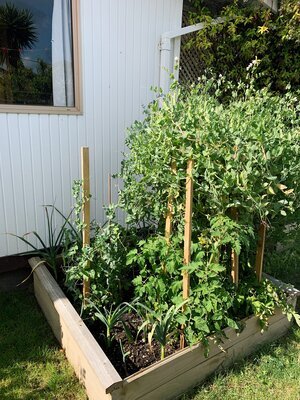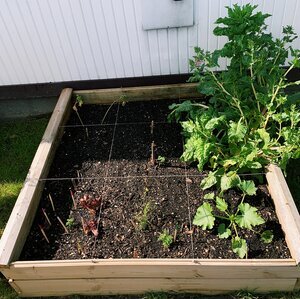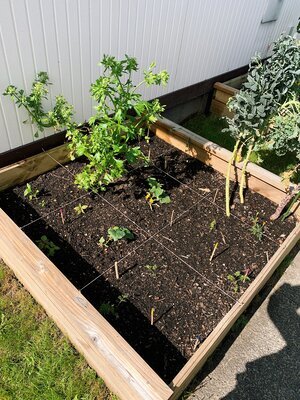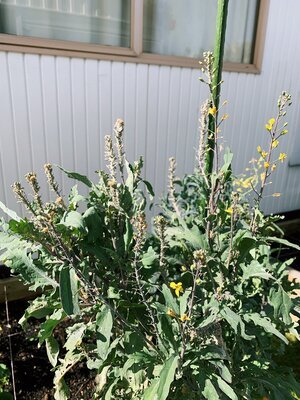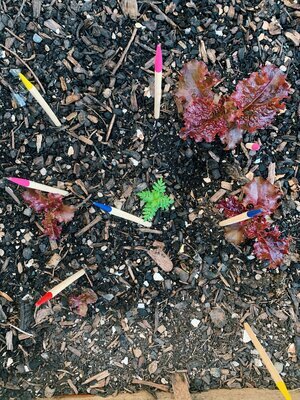How To Begin Your Sustainable Veggie Garden
There are few things more satisfying than growing your own vegetables. The feeling of nourishing a plant for its lifetime, then experiencing the taste of the plant and it nourishing you back, is one of a kind.
I grew up in a family who always had a small veggie garden, but it wasn’t until this year that I built and planted one of my own. My husband, Tim, and I were determined to do it right from the very get go, so spent a year researching how best to grow a thriving mini farm.
I’m still very new to this gardening thing, but I recently had a foodscaper visit my garden and completely overhaul and upgrade my garden knowledge. I wish I had Katrina’s help from the very beginning!
Luckily… you do.
Here are my tips for beginning your sustainable vegetable garden, with the help of an amazing expert, Katrina (Blue Borage).
Beginning
Tim and I run our garden roughly in line with the concept of Square Foot Gardening: growing a simple, ordered, and productive kitchen garden in a small space. We built (to be honest, this is where Tim and my father-in-law take the credit!) three planter boxes from scratch, and a small herb garden. Each planter box was divided into 9 squares with hemp twine, and filled with soil that was dropped off in the tray of a truck. FYI, the total cost of our garden build was approximately $800NZ (including soil, wood, tools).
The concept of Square Foot Gardening means you plant in groups of 1, 4, 9, or 16 per square. The number of plants per square depends on the size of the plant. Strategic crop rotation and companion plants can be used too- though I’m still getting the hang of that.
Like all gardens, the first year of growing continues to be an experiment. I’ve been watching what grows best where, what fails, and how many carrot seeds are far too much for one square foot (my bad).
I’d advise you to get creative, follow garden accounts on Instagram and Facebook, and see what works for you. Square Foot Gardening has been great for us, but it may not be your cup of tea. Whatever you do, remember to only plant what you are actually going to eat. Don’t be like me and plant brussel sprouts that turn out to be pointless.
Edible Flowers
One of the best things Katrina taught me was: edible flowers are everywhere. I feel robbed that I never knew! While we pottered in the garden, I nibbled on the flowers of chives, coriander and borage. Coriander flowers = my new favourite thing.
Of course it’s important to check first if a flower is edible, but I encourage you to use edible flowers to liven up your meals.
Composting
I’ve always been a composter, but Katrina helped me improve my skills. I’ve been awkwardly turning my compost with a spade every week, but now I have a composter turner/twister that means it’s super easy to turn my compost up to three times a week. It’s so much fun to use, I have to stop myself from using it every day (which isn’t great for your compost). I was also encouraged to regularly put little compost piles around the base of my plants to give them extra nutrients.
Potting Mix
I’ve always bought my potting mix in those hideous thick plastic bags. Even though I buy the organic stuff, the plastic makes me furious. But I’ve never known another way! Guess what… you can make your own!
Coconut coir
Compost
Worm castings
Degraded leaf mulch
Pumice
This is great for growing seedlings too.
Growing plants from seed
For the past 9 months, I’ve used up seeds that I’ve been given, planted seedlings from a lovely elderly couple at my local farmers market, or seedlings from friends. Every time a plant ‘goes to seed’ and dies, I get frustrated that I have to buy more seeds or seedlings, and watch the plant die.
Katrina taught me how to let your plants go to seed, capture the seeds, and plant seedlings. This is all part of being self-sufficient and sustainable.
Depending on the plant, it’s important to wait until the plant has completely gone to seed and the seeds are quite dry. Take them off the plant and dry them in the sun for a while, or plant them straight into your seed raising mix in a separate container under shelter. I’m still learning how to do this for each plant variety, and sometimes it’s not possible, but my goal is to become completely self sufficient using this method.
P.S. I’m also trying to teach the local cats that my vegetable garden isn’t a litter box, hence the wooden stick barracks around my lettuces on the last photo.
How to deal with pests and bugs
Rely on roaming chickens
Welcome wild birds
Biodynamics (for Q & A and networking, join Auckland Biodynamics or sign up to the Blue Borage Gardening Group for instructional videos and help!)
Allow nature to balance things: healthy soil grows resilient plants, so over time pests become less and less of a problem
Extra lessons learnt
Planting herbs, flowers, and vegetables together helps to reduce bugs, increase soil quality, and generally create a thriving garden
Stinging nettle, yarrow, dandelion, comfrey, borage are all examples of herbs that improve soil health and some can help repel mosquitos and flies too
Loads of flowering companion plants will attract bees & many other pollinators
Avoiding growing brassicas in summer can reduce white butterflies
Coriander likes consistent moisture and not too much sun
Greens will often bolt when they feel they need to start making their seeds & reproducing. You can keep them young and fresh at this time of year with a little extra shade, and extra moisture. Otherwise, succession sowing is the way to go, scatter a few more seeds each week, and just keep picking the baby leaves
Crop swaps are an AMAZING way to expand your garden with little work! Keep an eye out on Katrina’s Instagram page for a crop swap near you
My flourishing snow peas! Note: sweet peas are poisonous, but snow peas are yummy. If the flower has a strong scent… do not eat them! They will be sweet peas.
Katrina has completely changed the way I do gardening, in a more cost effective, self-sufficient, and sustainable way. I’m forever grateful for all her guidance and inspiration.
She’d love to help you in your garden too! There are so many ways you can call on her expertise…
Personal garden session (just like she did for me!)
Group garden session- grab your friends!
Free weekly email for weekend gardening
Workplace garden set up - Katrina advise you on how to build a workplace garden and get you started
Contact Katrina here for any of the above and check out her public workshops here too.
A cute snap of Tim’s shoes that could not be repaired.

